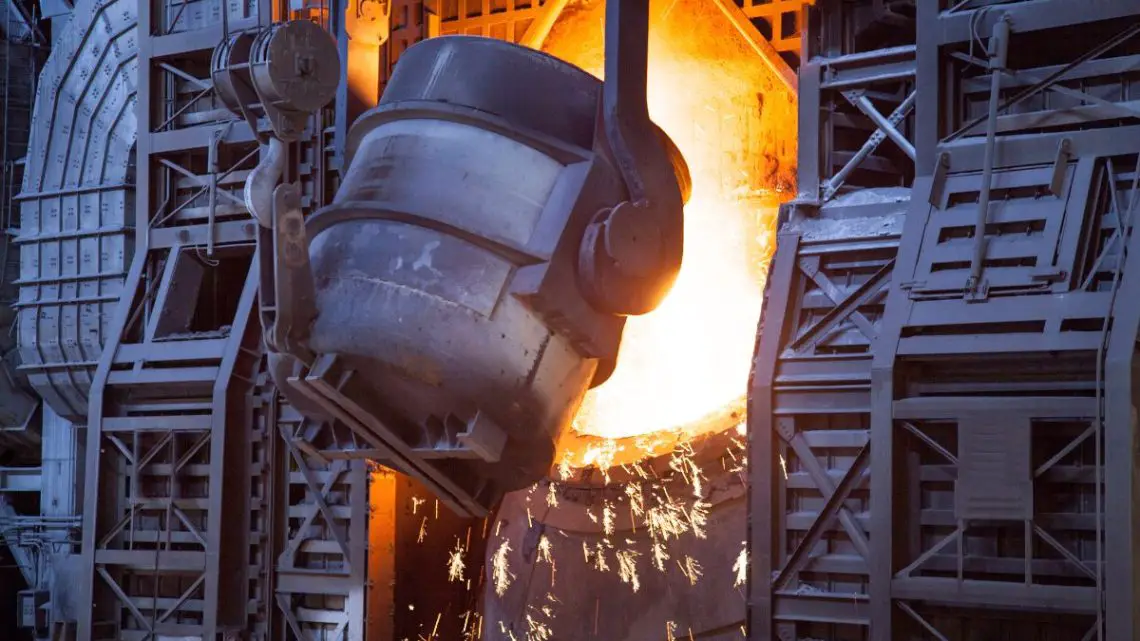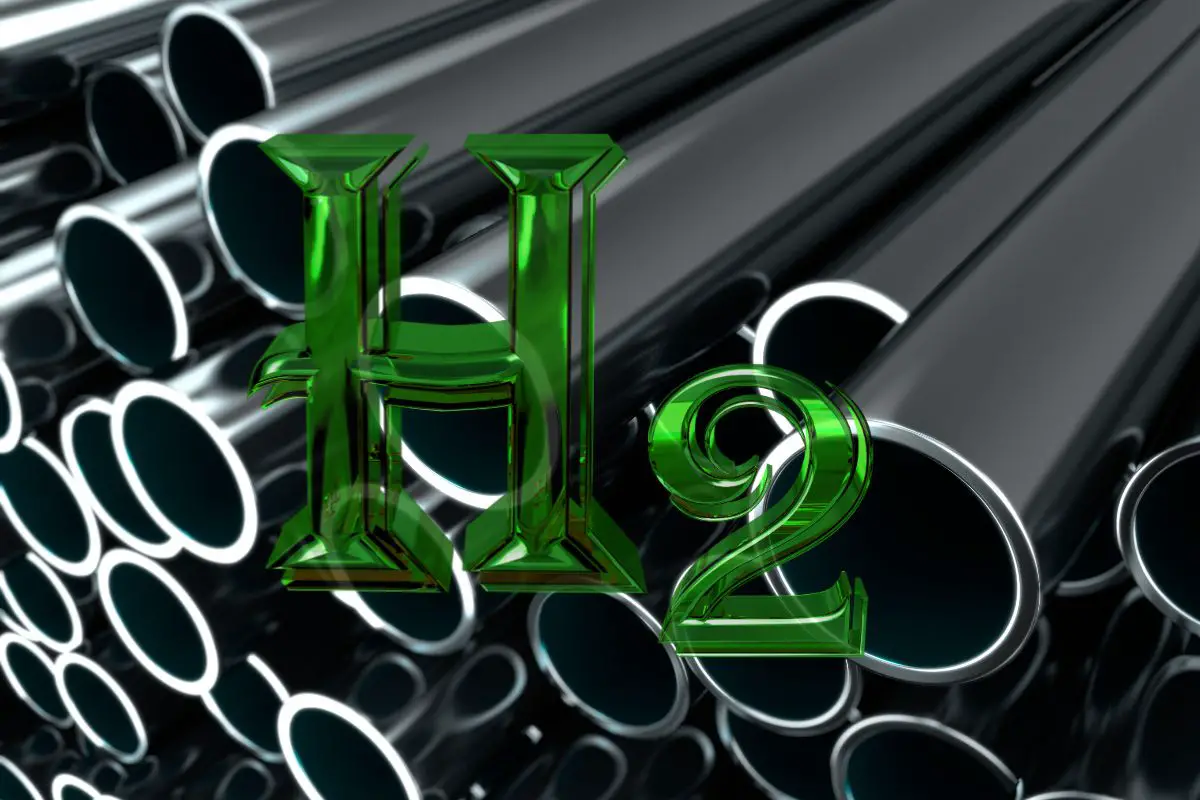
New hydrogen research seeks to improve green steelmaking process
August 9, 2023Hydrogen could be more effective at decarbonizing steel manufacturing if the process was better understood.
To learn how to effectively use H2 to decarbonize the steel industry, hydrogen research needs to be conducted to find out and understand exactly how hydrogen-based direct reduction works in the manufacturing process. A Binghamton University professor recently received a $470,700 grant to research the process on an atomic level.
The process that seems simple is actually quite complex.
Traditionally, smelters produce steel by removing oxygen from iron ore through a carbothermic method that combines iron oxide with carbon and intense heat. In recent years, experimental green steel projects that use hydrogen instead of carbon-intensive manufacturing have been popping up as the steel industry seeks to lower its emissions to meet government climate targets.
Binghampton University Professor Guangwen Zhou, who received the grant from the National Science Foundation (NSF) to conduct the steel making hydrogen research, explained that when looking at the reduction of iron oxides with hydrogen, “it looks quite simple.”
“You produce iron and water,” Zhou said, but “in reality, it’s actually quite complicated because the reaction involves several other intermediate solid phases.”
According to Zhou, it is necessary to look at which direction can be improved further to achieve better efficiency.
Zhou is the principal hydrogen research investigator for this new NSF grant.
Zhou, an associate director of Binghamton’s Institute of Materials Research and deputy director of the materials science and engineering program, has been studying metal oxides for over a decade. Recently, he teamed up with the Brookhaven National Laboratory and other collaborators for two major studies of oxide reactions in real time. These studies offered new insights into how the process works as well as how the reactions can be controlled.

Zhou and his students will use Brookhaven’s equipment, including an ambient-pressure X-ray photoelectron spectroscopy (AP-XPS) and environmental transmission electron microscopy (TEM), to study potential pathways to lower iron from iron oxide at temperatures above 1,000 degrees Celsius.
Through their hydrogen research involving the steel process, Zhou and this team want to provide a “fundamental understanding on the basic chronology of the reaction process and its complicated transformations.”
“Once we know that,” Zhou said, “we can play with factors like the amount of hydrogen, the pressure or the temperature to optimize the process.”
Decarbonizing the steel industry is a top priority.
 Over two billion tons of steel is produced globally every year. Steel is not only one of the world’s most important industrial materials, but it also accounts for 7 – 11% of all human-made greenhouse gas emissions. To put this into greater perspective, if the steel industry was a country, it would rank as the fifth-largest producer of CO2 emissions in the world.
Over two billion tons of steel is produced globally every year. Steel is not only one of the world’s most important industrial materials, but it also accounts for 7 – 11% of all human-made greenhouse gas emissions. To put this into greater perspective, if the steel industry was a country, it would rank as the fifth-largest producer of CO2 emissions in the world.
“I think this project comes at the right time,” Zhou said of the hydrogen research. “There’s a lot of interest from the research community and from society, because of the need to reduce greenhouse gases.”
FAQs on Recent Green Practices in the Steelmaking Industry
- What are green practices in the steelmaking industry? Green practices in the steelmaking industry refer to methods and technologies that aim to reduce the carbon footprint of steel production. These include using low-carbon energy sources, increasing energy efficiency, recycling scrap steel, and capturing and storing carbon emissions.
- How is hydrogen being used to decarbonize steel production? Hydrogen can be used in place of carbon to reduce iron ore to iron in a process known as direct reduction. This process produces water as a byproduct instead of carbon dioxide. However, the hydrogen must be produced using renewable or low-carbon energy to be considered a green practice.

- What is Carbon Capture and Storage (CCS) and how does it apply to the steel industry? Carbon Capture and Storage (CCS) is a technology that captures carbon dioxide emissions from industrial processes, such as steelmaking, and stores them underground so they can’t contribute to climate change. For the steel industry, CCS can be applied in blast furnaces or during the direct reduction process.
- What is the role of electrification in decarbonizing steel production? Electrification involves using electricity—preferably from renewable sources—to power the processes involved in steel production. This could involve using electric arc furnaces to melt scrap steel or using electrolysis to produce hydrogen for direct reduction.
- How does recycling contribute to greener steel production? Recycling scrap steel in electric arc furnaces can significantly reduce the energy required for steel production compared to producing steel from iron ore. Additionally, because the steel has already been refined once, less carbon-intensive refining is needed.
- What are some challenges in making the steel industry greener? Challenges include the high costs associated with transitioning to new technologies, securing a reliable supply of low-carbon energy, and the technical complexities of some decarbonization methods. Policy support, research and development, and collaboration across the industry will be important for overcoming these challenges.
- What progress has been made in decarbonizing the steel industry? Several steel companies have made commitments to reduce their carbon emissions, and some are already implementing green practices. Experimental projects are underway to test the use of hydrogen in steelmaking, and carbon capture and storage technologies are being piloted at several sites.
- Why is decarbonizing the steel industry important? Steelmaking is one of the largest industrial sources of carbon dioxide emissions, contributing significantly to climate change. Decarbonizing the industry is therefore crucial for meeting global climate goals.
- What is the potential impact of green practices on the steel industry? The adoption of green practices could significantly reduce the steel industry’s carbon emissions. It could also lead to increased competitiveness for companies that adopt these practices, as there is growing demand for ‘green steel’ from industries like automotive and construction.
Ready to test your knowledge on the most abundant element in the universe? Take our fun and engaging Hydrogen Quiz now! [forminator_quiz id=”58712″]



 With over 15 years of reporting hydrogen news, we are your premier source for the latest updates and insights in hydrogen and renewable energy.
With over 15 years of reporting hydrogen news, we are your premier source for the latest updates and insights in hydrogen and renewable energy.
Thank you for sharing the latest news and updates with us. I am wanting to introduce you to a unique turquoise hydrogen plant called Rudra. The machine is manufactured by Pagnism UK and is designed to produce turquoise hydrogen and virgin carbon black with minimal environmental impact.
I believe that Rudra could be a valuable addition to your operations, and I would like to show you the machine and discuss its potential applications in the industry. The machine will be ultimately assembled in the UK, and I am confident that it could help you achieve your sustainability goals.
Please let me know if you are interested in learning more about Rudra and scheduling a demonstration. I look forward to hearing from you soon.